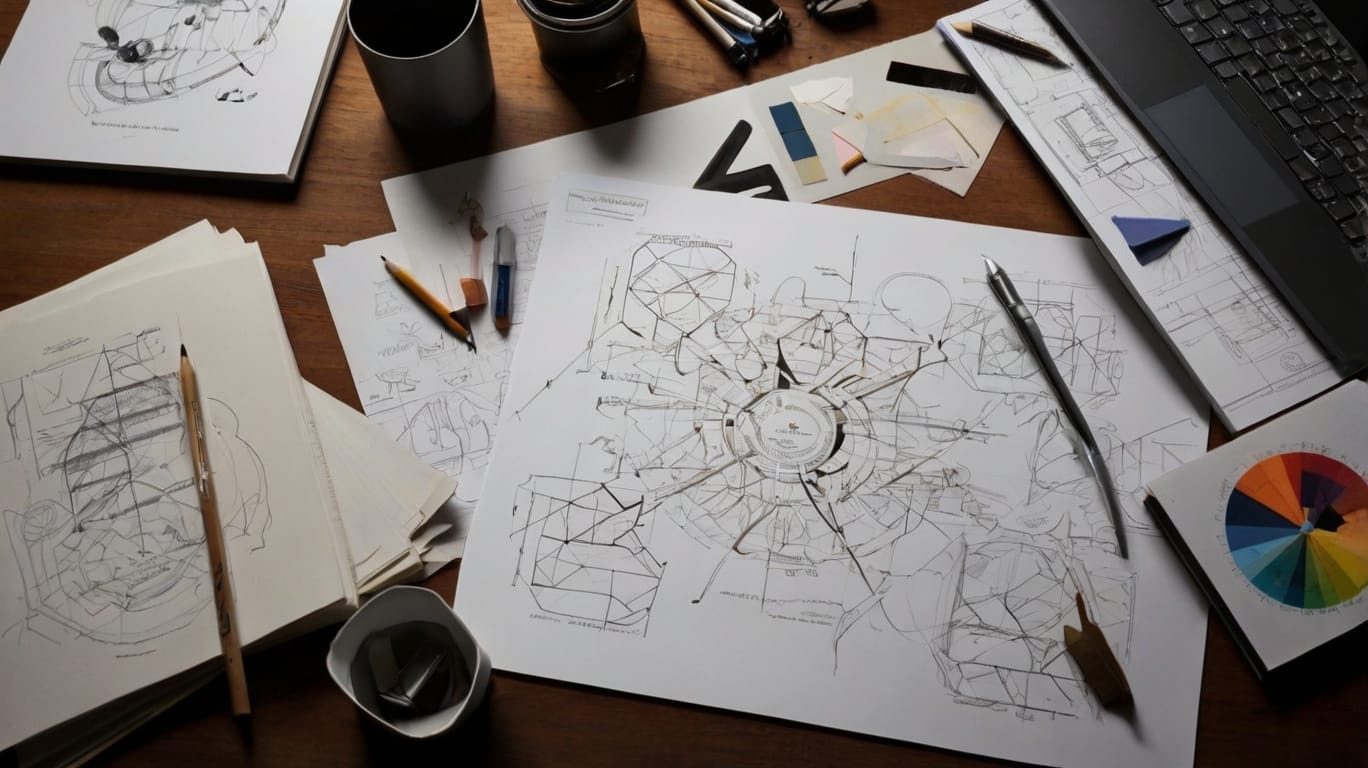A logo is more than just a visual element—it’s the face of a brand, a symbol that encapsulates identity, values, and vision in a single, striking design. From concept to creation, designing a logo is a meticulous blend of art and science that requires creativity, research, and technical expertise. This article explores the intricate process of logo design, delving into the principles, techniques, and strategies that lead to creating a timeless visual identity.
The Importance of a Logo in Branding
A logo serves as the cornerstone of a brand’s identity. It is often the first thing customers notice and the element they remember most. A great logo:
- Establishes Brand Recognition: A memorable logo helps customers identify and recall the brand easily.
- Conveys Brand Values: Colors, shapes, and typography subtly communicate the brand’s mission and personality.
- Builds Trust and Credibility: A professional logo instills confidence in the brand’s authenticity and quality.
- Differentiates from Competitors: A unique design sets a brand apart in a crowded marketplace.
The Science Behind Logo Design
1. Research and Understanding the Brand
Before starting the design process, thorough research is essential. This includes understanding:
- The Target Audience: Who is the brand trying to connect with?
- Brand Values and Mission: What does the brand stand for?
- Market Trends: What designs resonate within the industry?
2. Psychology of Design Elements
Every aspect of a logo has psychological implications:
- Colors: Evoke emotions and associations (e.g., blue for trust, red for energy).
- Shapes: Convey meanings (e.g., circles for unity, triangles for strength).
- Typography: Reflects tone and style (e.g., sans-serif for modernity, serif for tradition).
3. Simplicity and Scalability
A good logo is simple and versatile. It should be:
- Easily Recognizable: Avoid overly complex designs.
- Scalable: Look good on everything from a billboard to a business card.
- Timeless: Designed to stay relevant for decades.
The Artistic Process of Logo Creation
1. Concept Development
The creative journey begins with brainstorming and sketching ideas. Designers often:
- Use mind maps to explore visual metaphors.
- Experiment with various layouts and symbols.
- Align concepts with the brand’s core message.
2. Drafting and Prototyping
Initial sketches are digitized using design software like Adobe Illustrator. At this stage:
- Multiple variations are created.
- Typography and color schemes are tested.
- Feedback from stakeholders is gathered.
3. Refinement and Iteration
Designs are refined to achieve balance and harmony. This involves:
- Adjusting proportions for aesthetic appeal.
- Testing designs in different formats and sizes.
- Ensuring the logo works in both color and monochrome.
Principles of Effective Logo Design
- Relevance: The design must align with the brand’s industry and audience.
- Simplicity: A clean design is easier to recognize and remember.
- Versatility: The logo should adapt to various applications without losing impact.
- Uniqueness: A distinctive logo prevents confusion with competitors.
- Timelessness: Avoid trends that may quickly become outdated.
Common Challenges in Logo Design
- Overcomplicating the Design: Adding too many elements can dilute the message.
- Ignoring Audience Preferences: Designs must resonate with the target demographic.
- Focusing Solely on Trends: Trendy designs may lack longevity.
- Neglecting Technical Aspects: Poor scalability or color choices can hinder usability.
Examples of Iconic Logos and Lessons
Apple:
- The minimalist apple symbol reflects simplicity and innovation.
- Lesson: A logo doesn’t need to explain everything; it should spark curiosity.
Nike:
- The swoosh represents motion and energy.
- Lesson: A single shape can convey a brand’s essence powerfully.
FedEx:
- The hidden arrow in the logo symbolizes speed and precision.
- Lesson: Clever design elements can add depth and intrigue.
Emerging Trends in Logo Design
- Responsive Logos: Adapting to different screen sizes and platforms.
- Gradient Colors: Adding depth and vibrancy.
- Geometric Patterns: Offering a modern and structured aesthetic.
- Hand-Drawn Elements: Adding authenticity and a personal touch.
Conclusion
The journey from concept to creation in logo design is an intricate process that blends creativity and strategy. A successful logo not only captures the essence of a brand but also resonates with its audience, standing the test of time. By mastering the art and science of logo design, businesses can establish a strong foundation for their brand identity and create a lasting impression in the minds of consumers.



